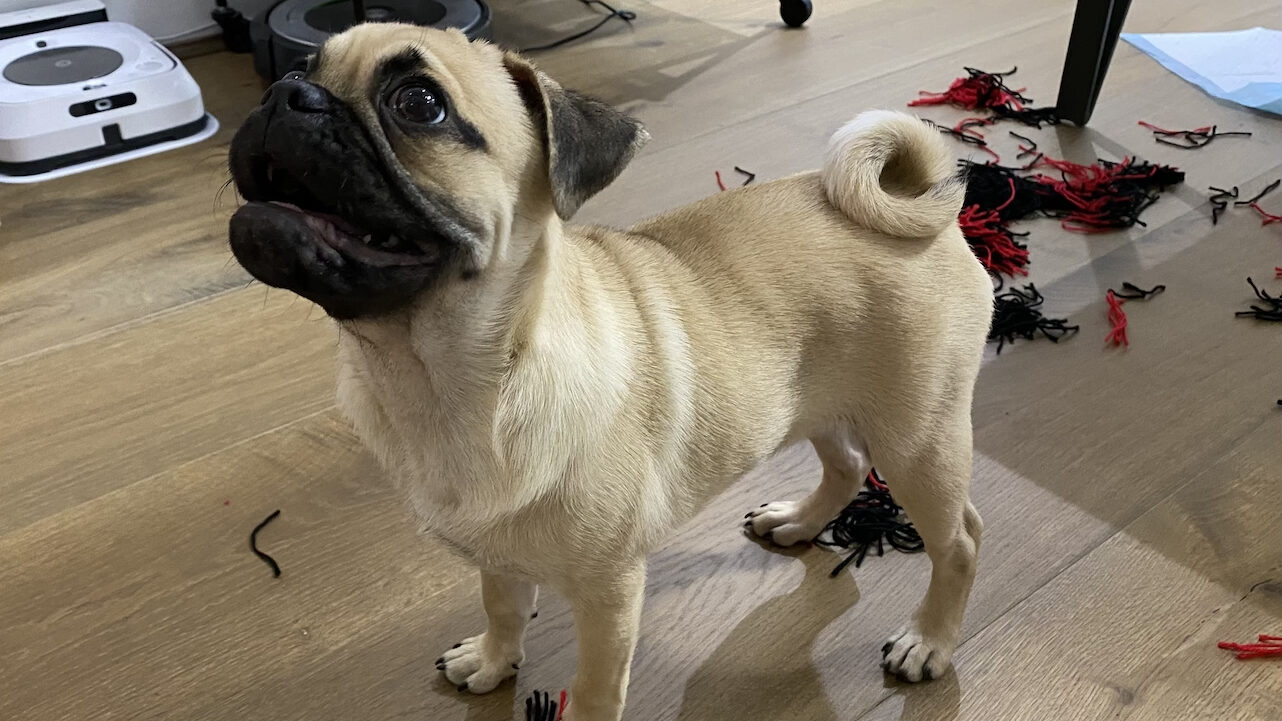How to take care of a new puppy

We asked renowned vet, Dr Katrina Warren, about how to care for your new your new pomeranian; daschund; labrador, or bulldog once you get them home.
How long can you leave a puppy alone for?
If you’ve adopted an animal during COVID quarantine, you’re not alone.
Through the lockdown period, pet stores and shelters were emptied by families looking to bring a new four-legged friend into their lives.
But as lockdowns start to lift and we start to go back to work, how long can you leave a puppy alone for?
According to Dr Katrina Warren, it’s important to establish a realistic routine as quickly as possible for your puppy.
“Setting aside time to exercise your pet before you leave the house will be beneficial as a tired pet is more likely to relax. As isolation restrictions ease and we start to leave the house more, it may be beneficial to have a friend, family member or dog walker can come and take your pet out for you during the day.
“It’s also important to ensure your pet spends time on their own at home even when your home and avoid letting them constantly follow you around.
“Lastly, be aware that puppies that came into new homes during isolation will now be turning into adolescent dogs, who tend to get bored easily and start to exhibit behaviour like chewing, digging, barking, jumping, which isn’t to be confused with separation anxiety, which when pets don’t cope when separated from their owner.
“So, if you have a young dog, you need to ensure it doesn’t have free access to areas of the house and garden where it can cause damage. Be creative with things to keep them occupied, such as chew toys!”
How to calm an anxious dog
Just like humans, anxiety looks different depending on the individual dogs. One of the greatest causes of stress in dogs is separation anxiety, according to Dr Katrina Warren.
“Dogs with separation anxiety are usually okay when you’re around but may get distressed when they see you getting ready to leave and your neighbours may inform you that your dog is barking or crying when you’re out.
“It can result in behaviours such as excessive barking, pacing, chewing and toileting in the house.
“If you’re concerned about any sudden changes in your pet’s behaviour, talk to your vet first to make sure there are no underlying medical conditions.
“There are a number of things that you can do at home to treat low level anxiety including supplements, increased exercise, playing calming music and setting up a safe space for your dog to retreat like the anti-anxiety Snooza Cuddler bed.”
How to leave a dog at home safely
You can’t simply shut the door on a dog and hope they’ll be ok. Dr Katrina Warren says there’s a lot to consider, as young or anxious animals can engage in all sorts of potentially dangerous activities.
“Chewing is a classic example of something that can get a dog into a lot of trouble.
“From chewing up a plant that is toxic or through electrical cables or getting into a cupboard to eat an entire loaf of bread – your home is full of potential dangers for a young animal that’s left on its own.
“I highly recommend that young animals are confined in a safe area, whether that be crate, a play pan or a safe room in the house where you are comfortable to know they can’t get into any danger.
“This could be a kennel, pen, crate or bed area where they can go where they will not be disturbed by family members. You have to respect this ‘safe place’ and avoid interacting with your pet when they are there.
“Pets may benefit from a walled bed such as the Snooza Cuddler bed because of the walls and deep sleeping area that allows them to snuggle and feel secure or the Snooza Ortho Sofa that has walls but a firmer orthopaedic base for those who need it.”
Luke Hopewell is the editor and co-founder of Redaktör. He's previously been the Editor of Gizmodo, Founding Editor of Business Insider Australia, Editorial Lead for Twitter Australia and more.


